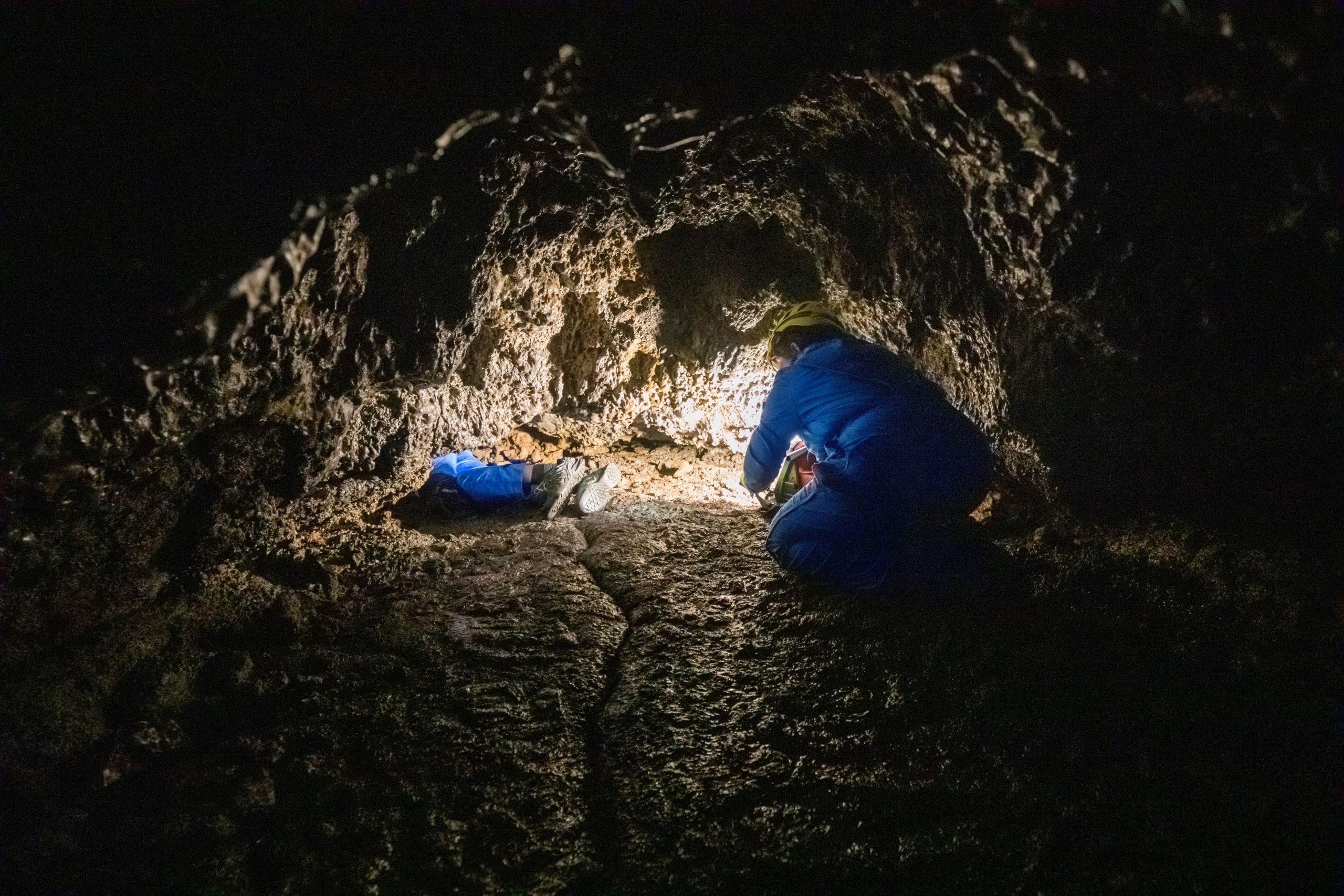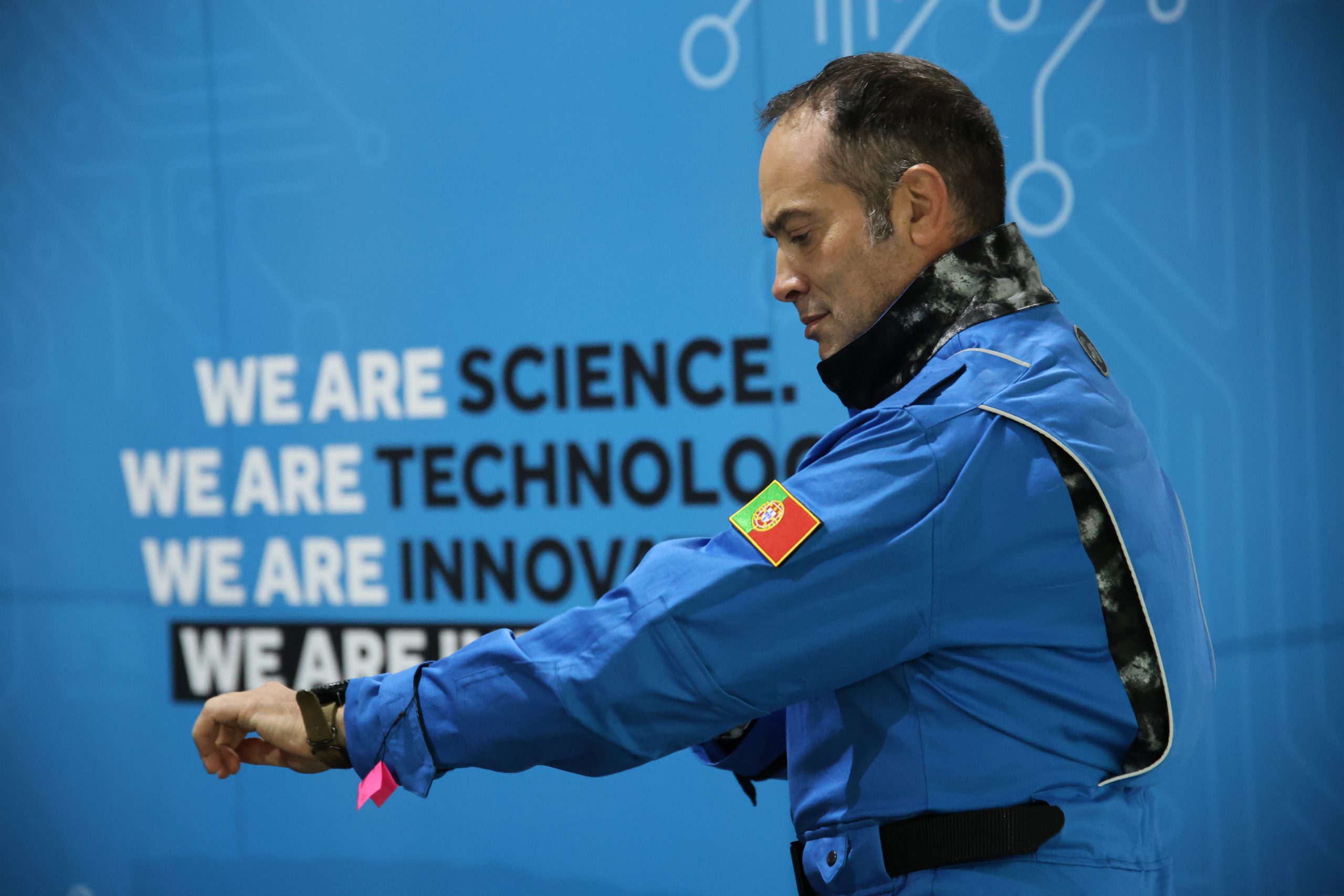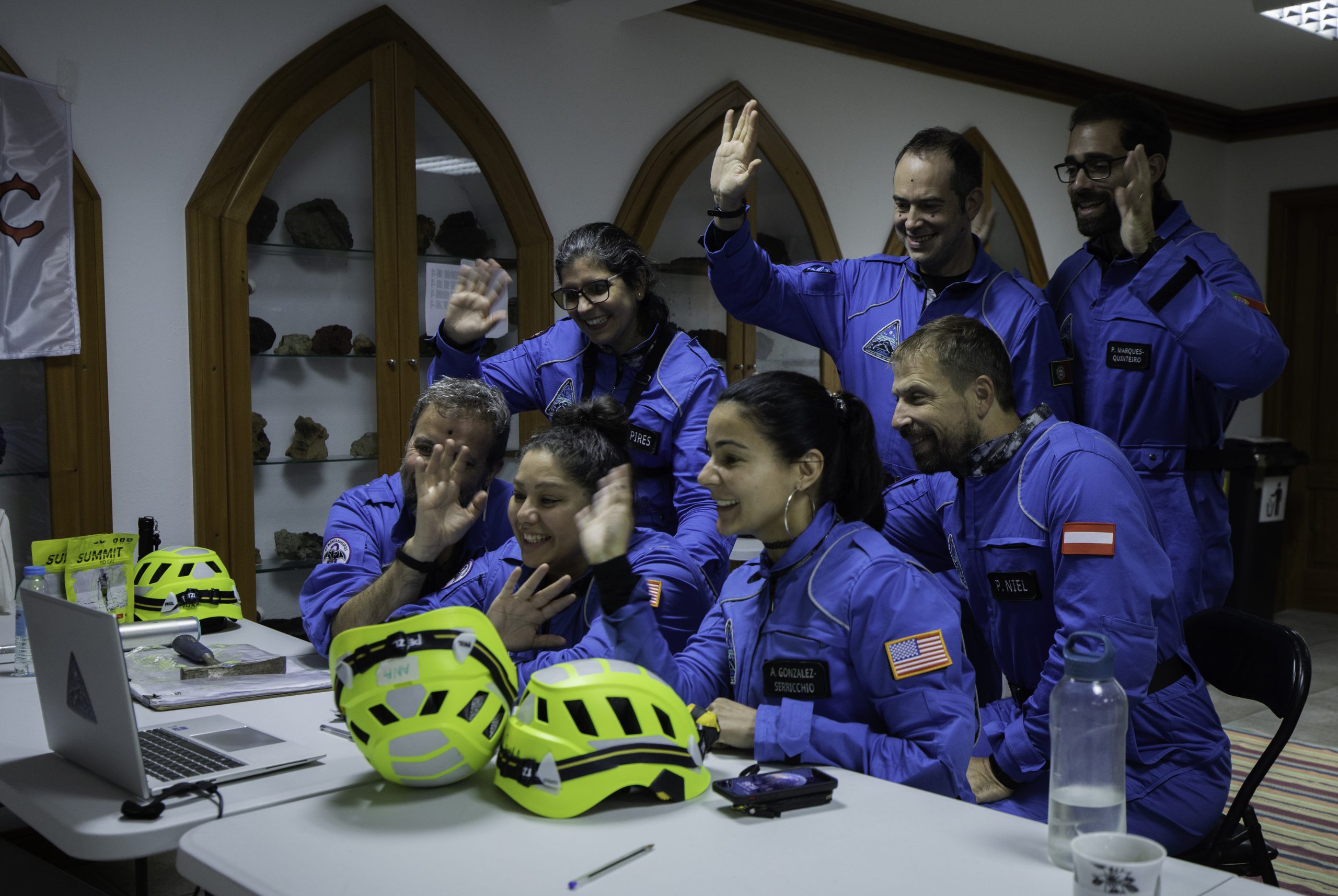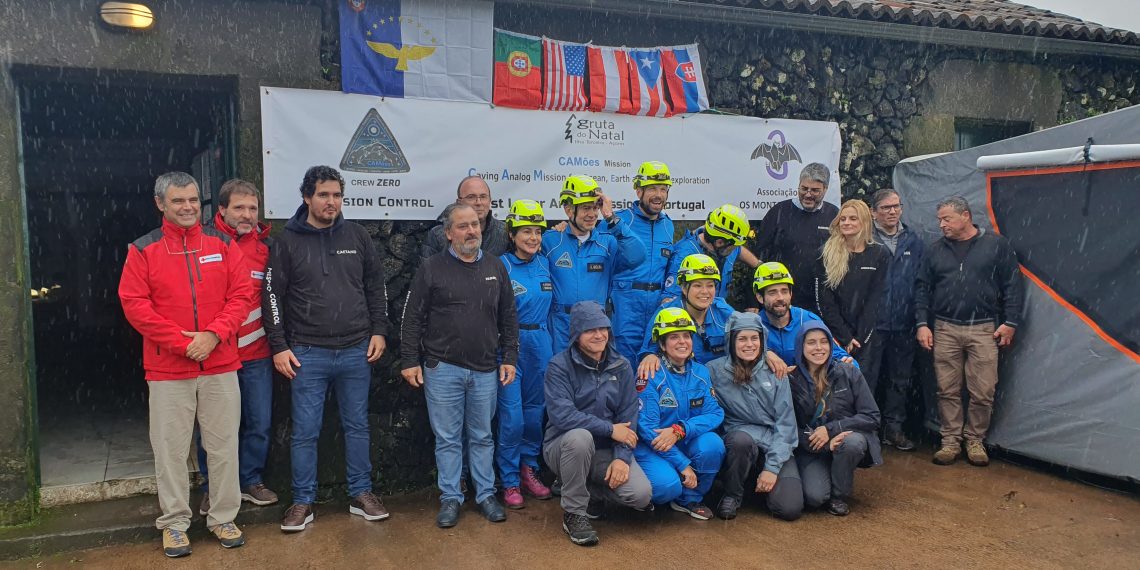A group of seven scientists spent six nights and seven days inside Gruta do Natal (Terceira Island, Azores), replicating the lunar environment. It was the first analog mission carried out in Portugal, and the goal was to turn the Azores into a training site for astronauts from all over the world. They called it the CAMões project (Caving Analog Mission for Ocean, Earth and Space Exploration). INESC TEC, together with the Associação Os Montanheiros, led and organised this project from the beginning; not only because the superior/leader of the mission is a researcher at the institution, Ana Pires, but also because if featured technology from various areas of the Institute, tested and applied to a great mission: to familiarise the younger generations with STEAM (Science, technology, engineering, arts and mathematics).
The role of robotics
As a geotechnical engineer, Ana Pires aimed to explore the conditions inside the Gruta do Natal, whose similarities with the lava tubes on Mars and the Moon are significant; this favoured the mapping and 3D modelling of the cave. This is area has been explored by INESC TEC researchers dedicated to robotics – who have been developing innovative robotic solutions for complex environments, like this cave, and multiple operations: data collection, inspection, mapping, surveillance or even intervention. Although these researchers have dedicated great efforts on developing these solutions for application in the deep sea, the similarities between lunar surfaces and underwater robotic exploration are great; plus, both are considered extreme environments.

The project allowed to explore space, land, and sea technologies, providing significant benefits to local communities and scientific research. “The idea was to test underwater technologies, robots, sensors that can solve problems on land, and meet marine species, taking advantage of the climate ecosystem, and the island’s geodiversity and biodiversity. It is a much more comprehensive project than astronaut training”, said Ana Pires.
The organisation of two editions of the “SOE – Space, Ocean and Earth insights” event by INESC TEC is another example that proves the connection between technologies developed for space, ocean and terrestrial environments; the first edition took place in 2022, and the second in 2023 (within the scope of the Glex Summit), with researchers at INESC TEC Centre for Robotics and Autonomous Systems playing a vital role.
The data collected by the INESC TEC researcher during the mission will now be analysed and then shared with the scientific community.
What about biomedical engineering?
Although it is not, at first, an obvious relationship, it exists through a wearable system, developed by INESC TEC researchers, and capable of monitoring vital signs and measuring human exposure to harmful environmental parameters (e.g., high temperatures and humidity, etc.) in extreme conditions. But we’re not talking about vital signs exclusively; the researchers combined algorithms based on physiological and psychological indicators, to understand the impact of psychosocial risks, e.g., stress, on the users’ health – using psychophysiological information. The researchers placed the sensors to monitor the seven participants of the mission, thus carrying out tests in an adverse environment. The objectives were 1) to understand the ability of each mission crew member to wear and use wearable devices continuously; 2) to understand whether these devices can replace, in terms of capacity, accuracy and ease of use, some of the heavier medical equipment that are normally used to assess the main vital signs; 3) to understand the psychophysiological changes of the crew members, i.e., stress or fatigue levels, during the mission, through the use of the data provided by the wearable devices and surveys. The data gathered during the mission will now be processed by INESC TEC team of researchers, who have already received some feedback from the crew regarding the sensors.

The role of education
Since its inception, INESC TEC has had a very clear mission regarding the role it should play in promoting science and technology education. That is why, each year, the institution joins many initiatives promoted by entities like Ciência Viva or the associates themselves. The CAMões project was no exception: it addressed the role of education in STEAM areas, with the support of the Ciência Viva Programme and ESERO Portugal. The focus was the commitment to diversity, multidisciplinarity and equity as “weapons for education”.

During the seven days of the mission, the scientists spoke to students from several countries (Portugal, U.S.A., Puerto Rico, Pakistan and South Africa), via webinars; the students were able to closely follow this analog mission and ask questions to the research team.
Other scientific results of the mission
The work developed during the week did not focus exclusively on robotics or biomedical engineering. The group of seven scientists collected rock and soil samples, experimented with ice storage techniques and liquid nitrogen freezing – fundamental aspects in astrobiology research -, acquired data and made a 3-D model of the cave; they also tested facts developed especially for this mission, studied the behavioural and medical components, among others.
According to Ana Pires, “thanks to the relationships established with people from NASA and ESA, we hope to welcome astronauts from said entities to carry out similar missions inside Gruta do Natal”.
Between 2024 and 2025, SPRINGER NATURE will publish a book about the CAMões mission and volcanic structures. The objective is to highlight the importance of the science and technology involved, but also to publish the main results of the mission.
As for INESC TEC and Associação Os Montanheiros, there are already plans to continue the work of cartographic mapping and 3D modelling inside other Terceira Island caves.




 News, current topics, curiosities and so much more about INESC TEC and its community!
News, current topics, curiosities and so much more about INESC TEC and its community!